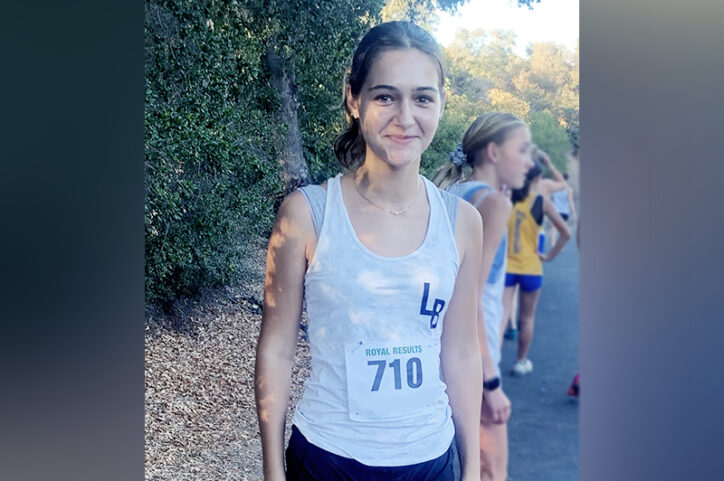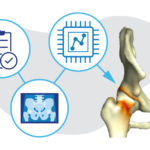Jenna’s comeback from PAO surgery

By the time Jenna was 14, her off-and-on hip pain had become an always-on issue. The accomplished soccer player and runner from Southern California had experienced intermittent pain since she was 12. She tried physical therapy to ease the hip pain, but it only got worse as she competed at higher levels. Over time, her discomfort increased until she couldn’t lift her leg without searing pain. “At this point, I realized something was really wrong,” says Jenna.
“We did everything,” says Jenna’s mother, Gina. This included more physical therapy and a long series of tests to identify the cause of her pain. Several clinicians said the hip pain was caused by overuse. Rest helped, but the pain came back anytime Jenna returned to the sports she loved. Many clinical visits later, she was diagnosed with hip dysplasia.
The hunt for a hip specialist
Now that they had a diagnosis, Jenna and Gina needed a treatment plan. A specialist in Los Angeles insisted that Jenna needed surgery. “He was adamant,” says Gina. “We didn’t like how aggressive he was.”
Hip dysplasia occurs when the hip socket is too shallow to cover the head of the thigh bone completely. The condition can cause joint instability, cartilage damage, and increasing pain.
The next hip specialist recommended operating on both of Jenna’s hips. Two surgeries would have meant a doubly long recovery and time away from soccer. Gina and Jenna kept looking.
As a professor of health, Gina had access to her college’s online library of medical journals. They had come to terms with the idea that Jenna would probably need a periacetabular osteotomy (PAO), a surgical procedure that changes the angle of the hip socket. Gina reviewed the literature and found Dr. Young-Jo Kim, director of the Child and Young Adult Hip Program at Boston Children’s Hospital.
When they met with Dr. Kim via virtual visit, Jenna liked his personal approach. Gina liked the clarity with which Dr. Kim described possible diagnostic and treatment approaches to Jenna’s hip pain.
In Boston, more information about Jenna’s hips
Before treating Jenna’s hips, Dr. Kim needed to know more about the severity of her dysplasia. Thus, during her first visit to Boston Children’s, Jenna underwent a dynamic hip ultrasound with Dr. Kim’s colleague in the Sports Medicine Division, Dr. Andrea Stracciolini.
The ultrasound provided a view of Jenna’s hips in motion so that Dr. Stracciolini could measure the degree of instability in both. This and other tests confirmed that Jenna had dysplasia in both hips, but the condition was only severe enough to require surgery in one.

Dr. Kim drew a diagram of Jenna’s hip, how he would change the angle of the socket, and what her hip would look like after it healed.
“He was very patient and methodical,” says Gina. “The other surgeons we met with seemed rushed, like we were just a number. As a parent, I liked his approach much better.”
Jenna’s PAO surgery
Jenna had PAO surgery in May 2021. During the operation, Dr. Kim cut her hip bone in several places and rotated it so the femoral head (the ball at the top of her thighbone) fit securely inside the socket. He then secured Jenna’s hip bone in its new position with screws. Over the next several months, new bone would grow and fill in areas around the two cuts.
The day after surgery, a team of physical therapists visited Jenna’s room. Over the next several days, she worked on tasks such as sitting up by herself, putting on socks, walking and going up and down stairs with crutches. “It was excruciating, but I did it,” Jenna remembers.
After a week in the hospital, Jenna, an athlete known for sprinting ahead of the pack, returned to school in a wheelchair. Determination and her athletic spirit got her through the stages of recovery: from being wheeled around school in a wheelchair to walking with crutches, walking without crutches, and eventually running again.

Back in the game and attracting recruiters
While it was sometimes hard to believe they would, all of the seemingly small steps Jenna took over the next year added up to a remarkable recovery. Today, she is back in top form and has been recruited by college teams for both soccer and cross country.
“It feels really good,” she says of her triumphant return to athletics. “Before, I would play in pain and then couldn’t walk for a few days. But now I can do all the things I want to do — without pain.”
Learn more about the Child and Young Adult Hip Program.
Related Posts :
-

Always an athlete: Drew and Legg-Calve-Perthes disease
When he looks back on the diagnosis that forced him to stop playing sports entirely for more than a year, 11...
-

AI could change the way we look at hip preservation
Orthopedic surgeons and biomedical engineers are trained to approach adolescent and young adult hip pain from two different perspectives. Surgeons ...
-

After hip dysplasia, Emma smashes her cast
When she could walk again, Emma Wilkinson and her parents threw a big party. Diagnosed with hip dysplasia at the ...
-

Hip pain resolved, Louise takes steps to become a surgeon
Louise Atadja couldn’t remember the last time her two big toes touched. Ever since she was born, her feet ...





